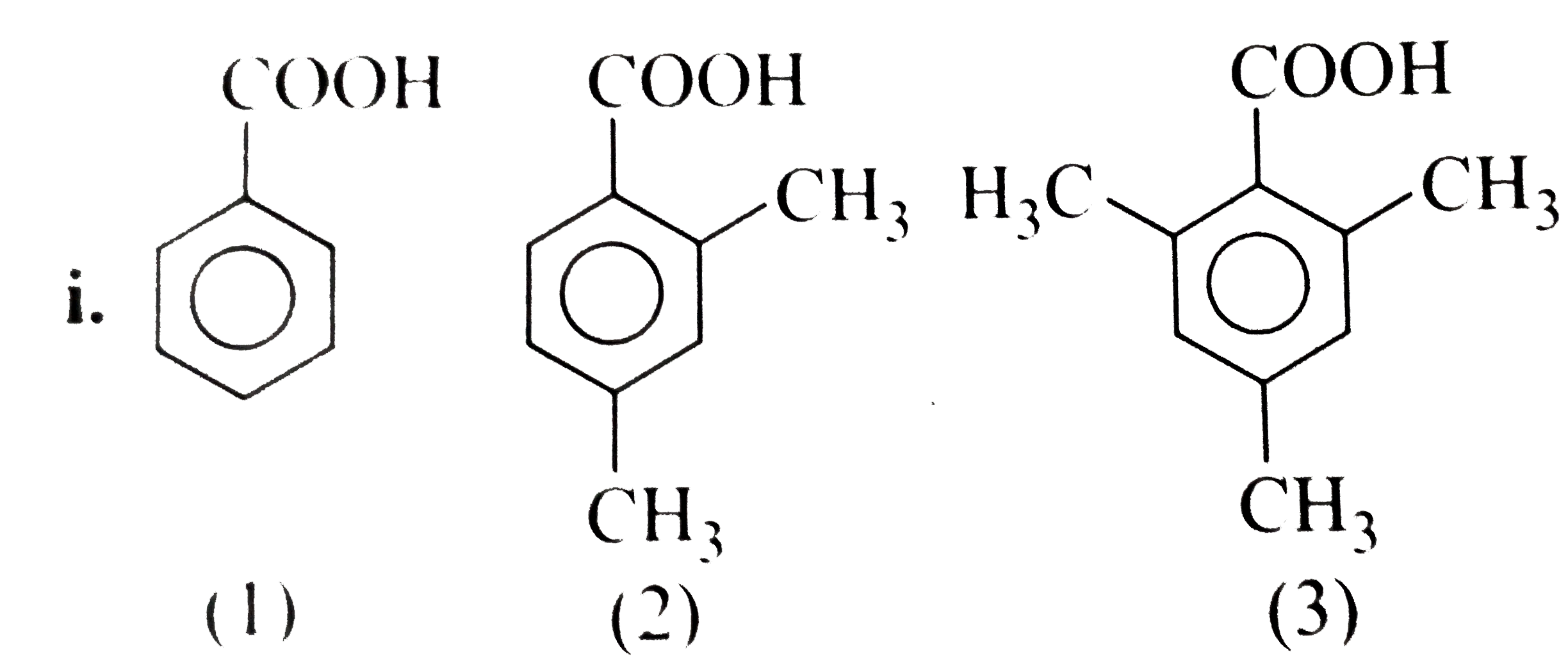Arrange the following alchols in the decreasing order of their reactivity with :
(1)
(2)
(3)
(4)
(5) .
Reactivity of alcohol with depends on the stability of carbocation.
Stability of carbocation : .
So the order is : .
Topper's Solved these Questions
- GENERAL ORGANIC CHEMISTRYBook:CENGAGE CHEMISTRYChapter:GENERAL ORGANIC CHEMISTRYExercise:Subjective
Explore 11 Videos
- GENERAL ORGANIC CHEMISTRYBook:CENGAGE CHEMISTRYChapter:GENERAL ORGANIC CHEMISTRYExercise:Concept
Explore 16 Videos
- GENERAL ORGANIC CHEMISTRYBook:CENGAGE CHEMISTRYChapter:GENERAL ORGANIC CHEMISTRYExercise:Analytical and Descriptive
Explore 1 Video
- CLASSIFICATION AND NOMENCLATURE OF ORGANIC COMPOUNDSBook:CENGAGE CHEMISTRYChapter:CLASSIFICATION AND NOMENCLATURE OF ORGANIC COMPOUNDSExercise:Analytical and Descriptive Type
Explore 3 Videos
- HYDROGEN, WATER AND HYDROGEN PEROXIDEBook:CENGAGE CHEMISTRYChapter:HYDROGEN, WATER AND HYDROGEN PEROXIDEExercise:Subjective Archive (Subjective)
Explore 3 Videos
Similar Questions
Knowledge Check
C6H5CH2OH is
APhenolBAlcoholCCarbolic acidD(a) and (c)Arrange the following alcohols in increasing order of their reactivity towards the reaction with HCl (CH3)2CH−OH(1),(CH3)3C−OH(2),(C6H5)3C−OH(3)
A1<2<3B2<1<3C3<1<2D2<3<1Arrange the following anilies in decreasing order of basicity
1. C6H5NH2
o−CH3C6H4NH2
3. m−CH3C6H4NH2
4. p−CH3C6H4NH2A4>1>2>3B2>4>3>1C1>2>3>4D4>3>2>1
Arrange the following in the increasing order of basicity.
C6H5NH2,C6H5NHCH3,C6H5N(CH3)2
View SolutionArrange the following in decreasing order of solubility in water
(i) CH3CH2OH (ii) CH3OH (iii) C6H5CH2OH.
View SolutionArrange the following in the decreasing order of boiling points :
(i) (1) C3H8
(2) C2H5OH
(3) (CH3)2O
(4) CH2OHCH2OH
(ii) (1) 3−Pentanol
(2) n-pentane
View SolutionArrange the following in the decresing order of acidic strength :
(a) H2O,CH3OH,C6H5,OH,CH2COOH
(b)CH3CH2COOH,HOCH,C6H5COOH,ClCH2COOH
View Solutiona. Acid halides, anhydrides, esters and amides, all of them contain (C=O) group but none of them gives test for (C=O) group, i.e., they do not form oximes, hydrazones, and DNP derivatives, etc. Why?
b. Arrange the following in the decreasing order of nucleophilic addition.
i. (1)−CHO
(2)−COCH3
(3)−COOH
(4)−COCI
(5)−CONH2
(6)−COOCH3
(7)−COOΘ
ii. (1)CH3CHO
(2)CH3COCH3
(3)HCHO
(4)CH2H5CH2COCH3
iii. (1)CH3COCH3
(2)C6H5COCH3
(3)C6H5COC6H5
(4)C6H5CH2COCH3
iv. (1)C6H5CHO
(2)ρ−CH3.C6H4.CHO
(3)ρ−OH.C6H4.CHO
(4)ρ−NO2.C6H4.CHO
(5)ρ−CI.C6H4.CHO
v. (1)HCHO
(2)CH3CHO
(3)CH3COCH3
(4)CI3CCHO
c. Arrange the following in the increasing order of ease of hydrolysis.
(1)CCH3COOC2H5
(2)CH3COCI
(3)(CH3CO)2O
(4)CH3CONH2
d. Arrange the following in the increasing order of ease of acid-catalysed esterification of:
i.
ii. (1)CH3CH2COOH
(2)(CH3)2CHCOOH
(3)(CH3)3CCOOH
iii. (1)CH3CH2CH2OH
(2)CH3CHOHC2H5
(3)(CH3)2C(OH)C2H5
e. Arrange the following esters in decresing order of ease of alkaline hydrolysis.
i. (1)HCOOCH3
(2)CH3COOCH3
(3)(CH3)3CCOOCH3
(4)(CH3)2CHCOOCH3
ii. (1)CH3COOCH3
(2)CH3COOC(CH3)3
(3)CH3COOCH(CH3)2
(4)CH3COOCH2CH3
iii. (1)C6H5COOCH3
(2)ρ−CH3O−C6H4−CCOOCH3
(3)ρ−NO2−C6H4−COOCH3
(4)ρ−Cl−C6H4−COOCH3
View Solution
